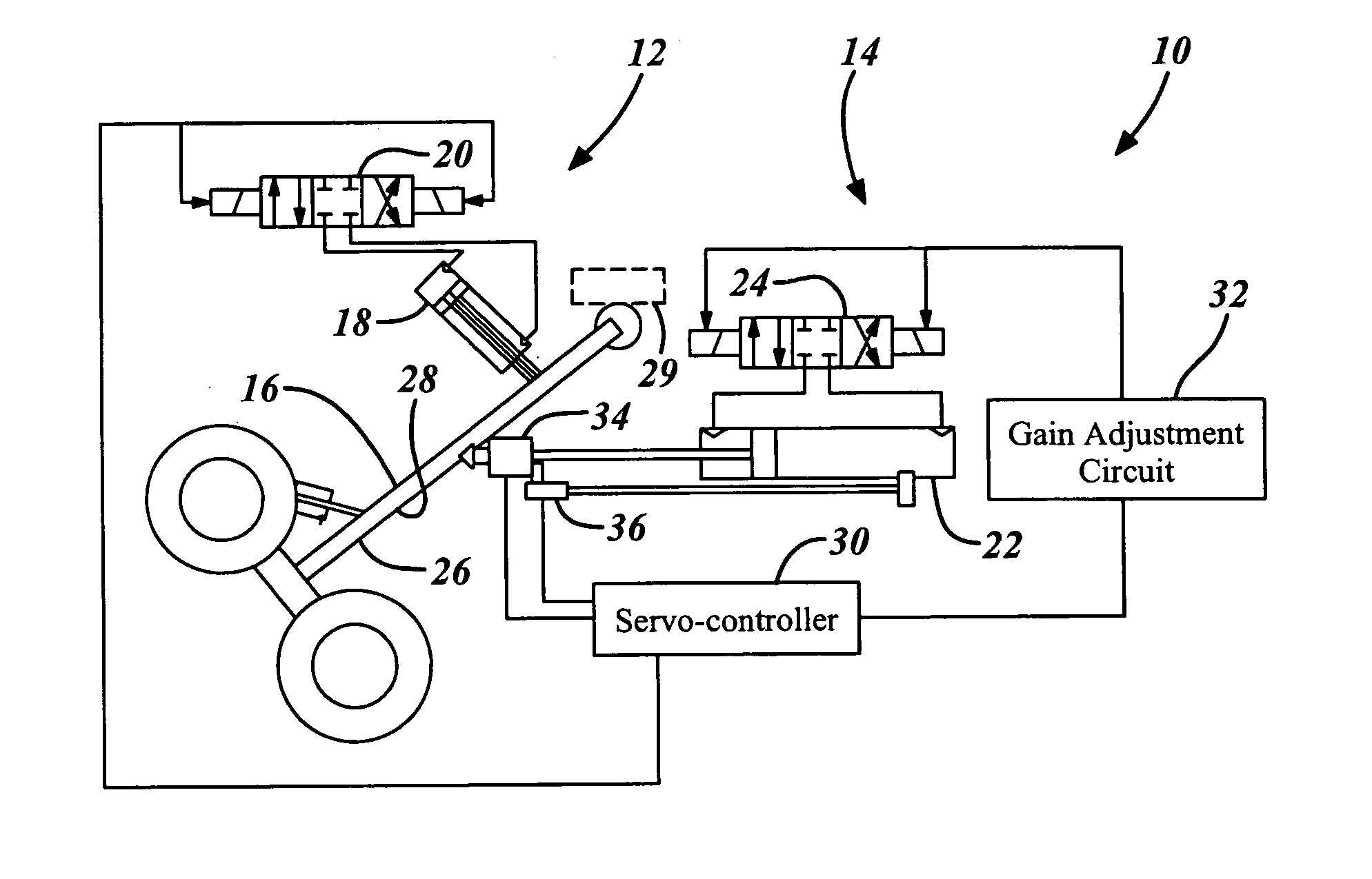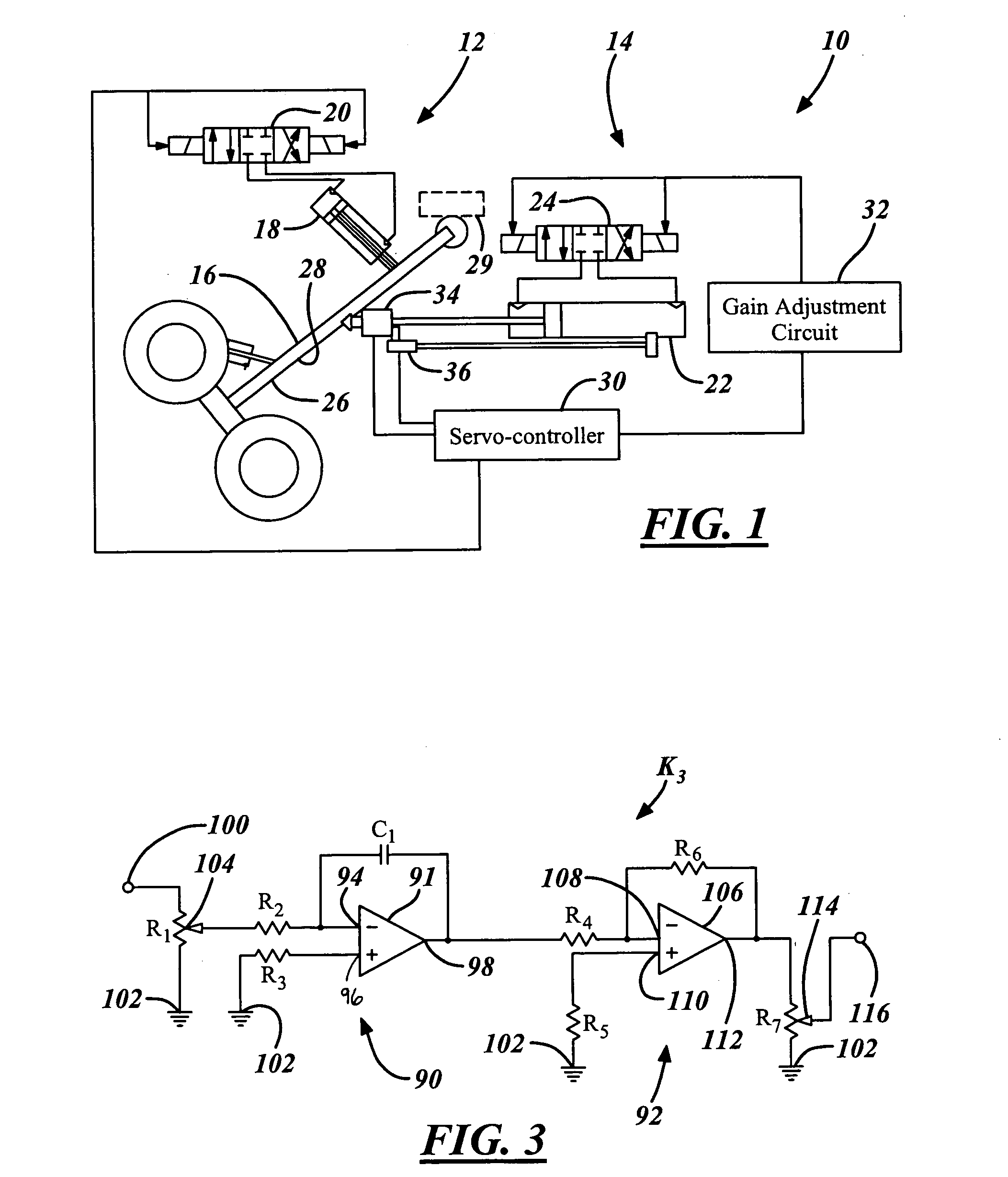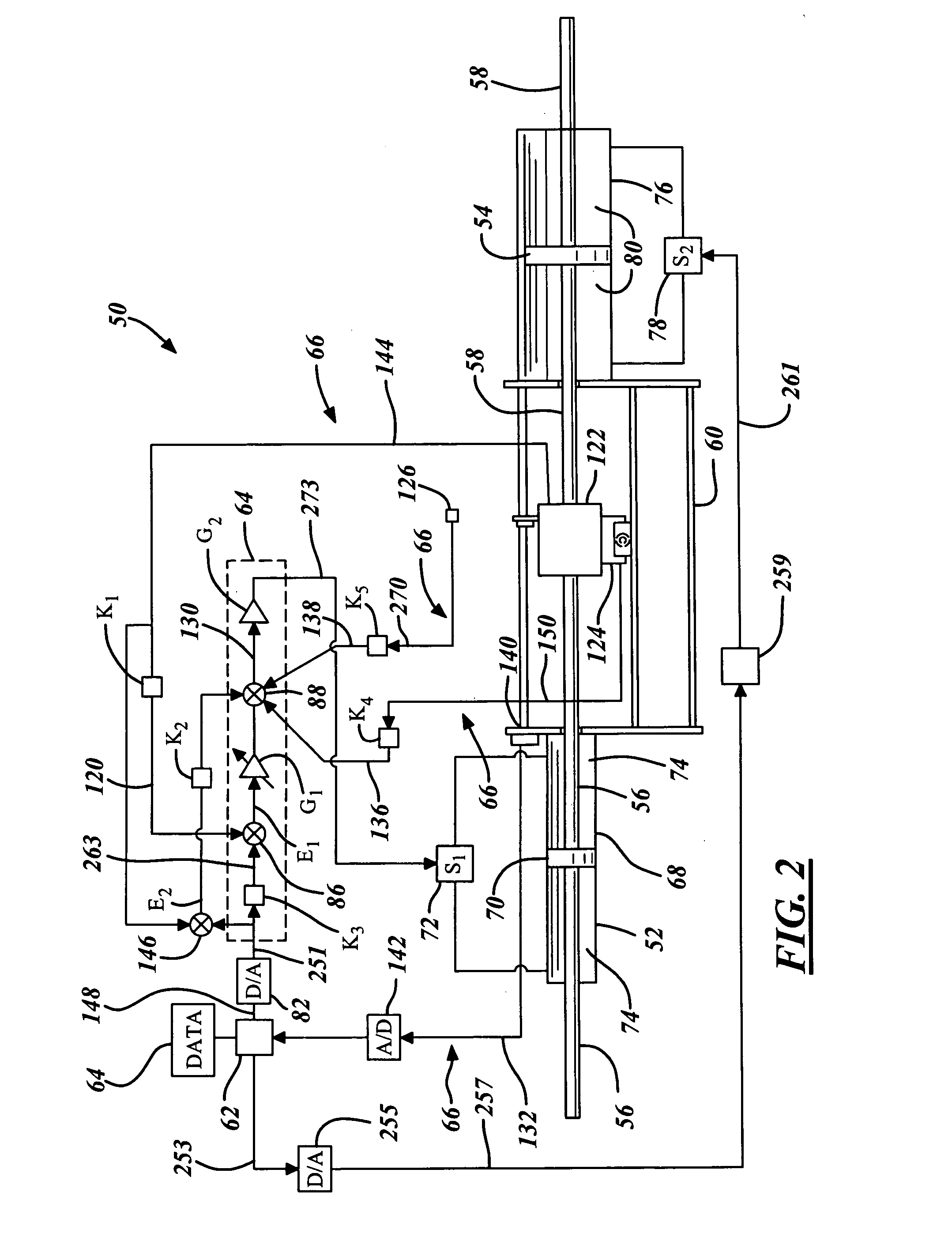Velocity feedback compensation for force control systems
a technology of velocity feedback and control system, applied in the direction of electric programme control, program control, instruments, etc., can solve the problems of accelerated fatigue, difficult to follow, and high cycle rate, so as to reduce control errors, accelerate fatigue, and accelerate the cycle of test objects.
- Summary
- Abstract
- Description
- Claims
- Application Information
AI Technical Summary
Benefits of technology
Problems solved by technology
Method used
Image
Examples
Embodiment Construction
[0034] In each of the following Figures, the same reference numerals are used to refer to the same components. While the present invention is described with respect to systems and methods of applying a controlled force on a test object, the present invention may be adapted for various applications and systems including: aeronautical systems, land-based vehicle systems, or other applications or systems known in the art that require servicing of a vehicle. The present invention is applicable to force control systems where the object in which a force is applied has motion relative to some inertial reference. This reference may be the same as that of the force control system. The present invention also applied to static and dynamic testing applications.
[0035] In the following description, various operating parameters and components are described for one constructed embodiment. These specific parameters and components are included as examples and are not meant to be limiting. Also, vari...
PUM
 Login to View More
Login to View More Abstract
Description
Claims
Application Information
 Login to View More
Login to View More - R&D
- Intellectual Property
- Life Sciences
- Materials
- Tech Scout
- Unparalleled Data Quality
- Higher Quality Content
- 60% Fewer Hallucinations
Browse by: Latest US Patents, China's latest patents, Technical Efficacy Thesaurus, Application Domain, Technology Topic, Popular Technical Reports.
© 2025 PatSnap. All rights reserved.Legal|Privacy policy|Modern Slavery Act Transparency Statement|Sitemap|About US| Contact US: help@patsnap.com



